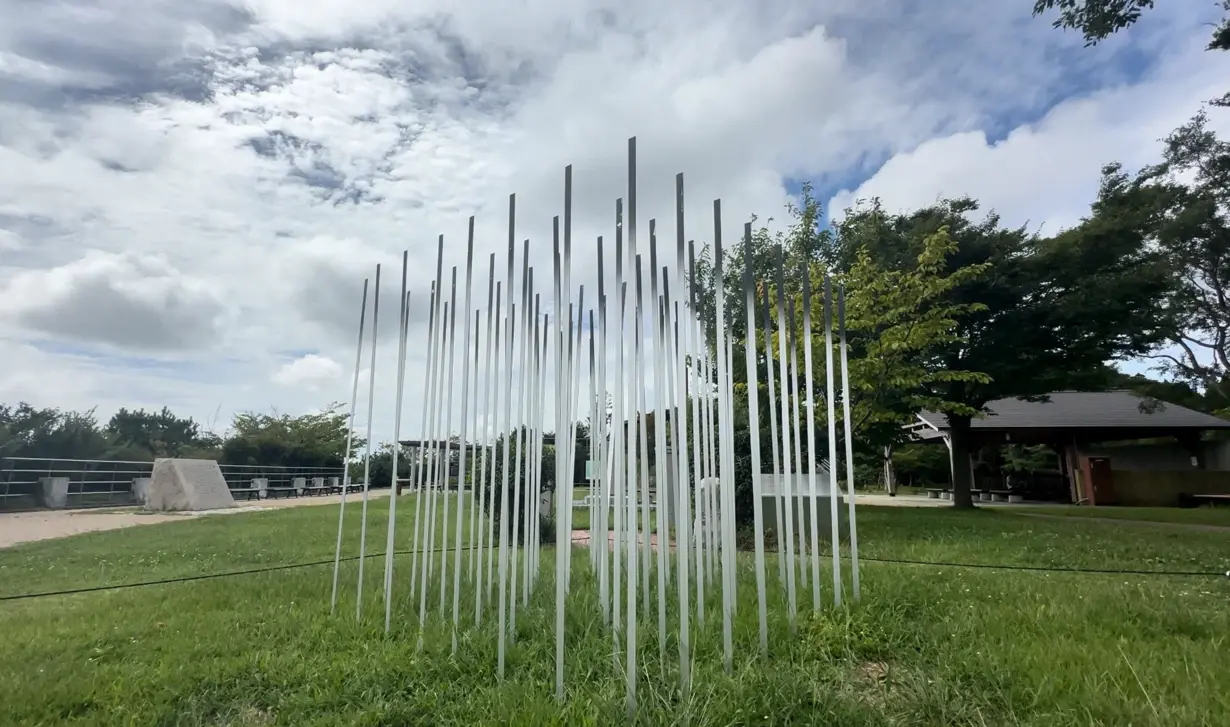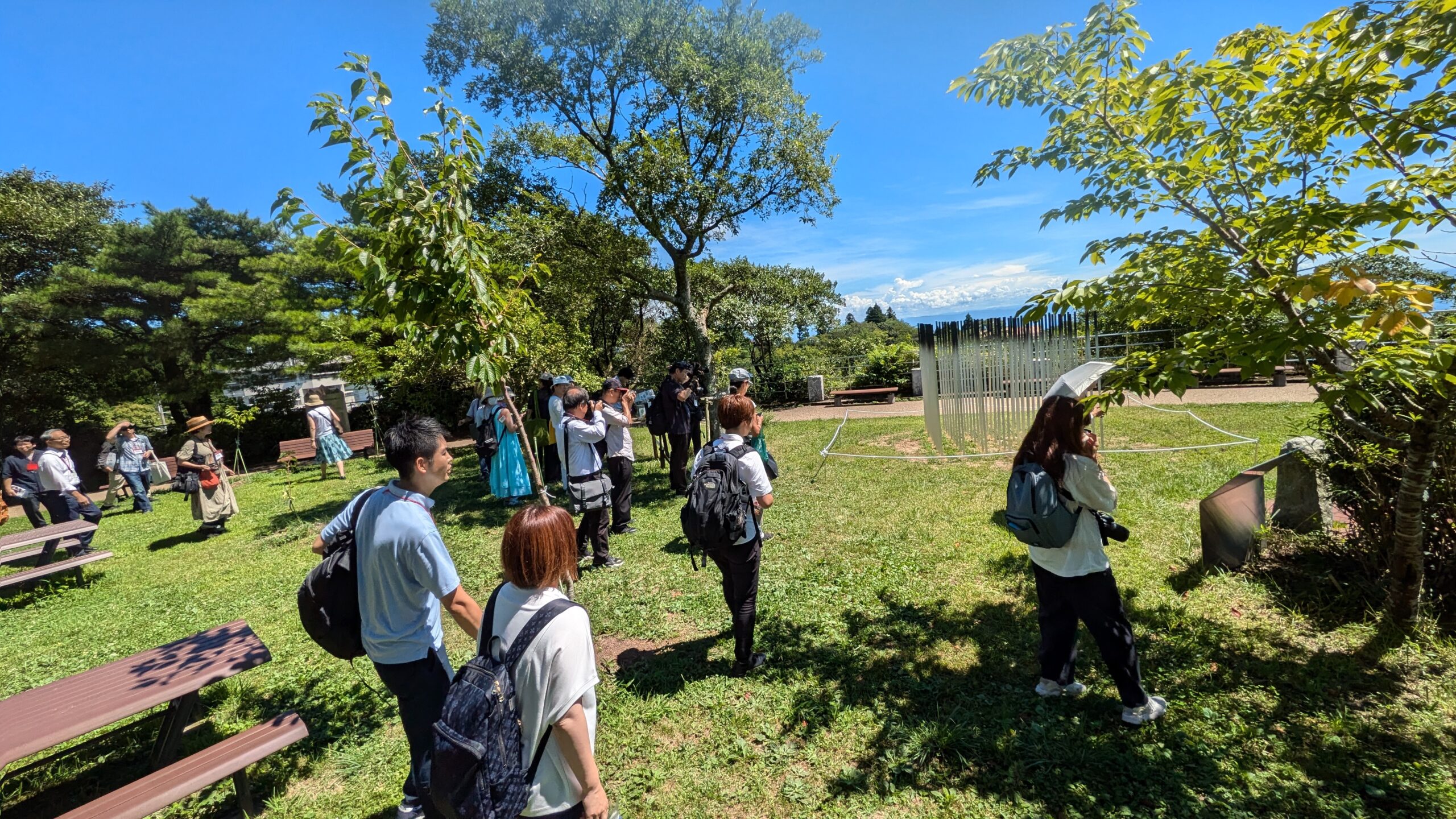Selected and Commissioned Artwork, Kobe Rokko Meets Art 2024

Storks is an artwork that invites viewers to remember the Oriental Stork, a bird that once thrived throughout Hyogo Prefecture, including the area that is now Kobe. The species disappeared as a result of Japan’s period of rapid economic growth—urban expansion, intensified agriculture, and the widespread use of pesticides gradually erased the ecological conditions that supported their lives.

The work reflects on how human progress and the pursuit of economic scale have displaced other forms of life that once shared the same landscapes. Composed of approximately 100 metal rods, each around two meters in length, the piece moves with the wind—swaying gently in a breeze and dramatically bending in strong gusts. This motion evokes the image of a stork spreading its large wings and descending toward the field, stirring the grasses as it lands.
In this ephemeral, wind-driven movement, the stork reappears not as a visible body, but as a presence—a memory suspended in the air.
Through this work, I aim to create a moment in which viewers imagine the return of the stork, and in doing so, reconsider how human development and natural ecosystems might coexist. The piece does not mourn extinction as an endpoint, but instead gestures toward an ongoing question: How might we remember and make space again for the lives that have been pushed out of the landscapes we inhabit?

This work is composed of about 100 flat aluminum rods arranged in a cubic form roughly 2 meters wide and 2 meters high, making its overall dimensions almost equal to those of an adult Oriental stork. Using guides, each rod is individually fixed into the ground with mortar, and because they stand independently, they sway in response when the famous strong winds of Mt. Rokko (the “Rokko Oroshi”) blow down. This movement evokes the way tall rice plants and other grasses sway when a stork descends to the ground.


